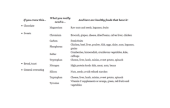Here's an interesting article on preserving Beef, Pork, Lamb and Eggs back in the good o'le days.
PRESERVING MEAT
ON THE FRONTIER
by C. F. Eckhardt
Imagine living in an era when there is no refrigeration. None at all. If you live in a town you might get ice delivered to your house every week or so during the spring, fall, and winter, about twice or three times a week during a Southern, Texas, or Southwestern summer. However, if you live in the country, you're not going to have ice except as a special treat a few times a year. Of course, if the creek nearest your property freezes over during the winter-thick ice, not thin-you might go down and saw chunks of ice out of the creek. Unless you've got well-insulated underground storage for it, it's not going to last much past the middle of June. So-how are you going to preserve meat for late spring, summer, and early fall eating?
Meat was dried-the stuff called 'jerky' from what Native Americans called it, though the practice seems to be world-wide. In sub-Saharan Africa exactly the same stuff is called 'biltong.'
It was pickled. It was smoked. Those were about the only ways of preserving meat.
According to DR. CHASE'S RECIPES OR INFORMATION FOR EVERYBODY, the thirty-sixth edition of which came out in 1866, here are some recipes for preservation of meat without refrigeration. One of the recipes for preserving beef deals with hundred-pound lots, which would not be unusual on a farm or ranch. First you would thoroughly cover the beef in salt 'to draw out the blood.' After the beef remained in the salt for twenty-four hours you'd drain it and pack it into a wooden barrel. Then you'd prepare the preserving brine. This would consist of seven pounds of salt, one ounce each of saltpeter (potassium nitrate, also used in making gunpowder) and cayenne pepper, one quart of molasses, and eight gallons of 'soft water.' That was usually rainwater caught in barrels and allowed to settle until all the dust went to the bottom of the barrel. This you'd bring to a boil and 'skim well.' You'd then let it cool, pour it over the beef, and put a lid on the barrel.
Now, obviously, this stuff is gonna be mighty salty when you take it out of the barrel. What you'd do to get rid of the salt would be parboil the stuff-throw it in a pot of water and boil it for fifteen or twenty minutes. After that you could cook it in whatever way you wanted to. Unfortunately, parboiling has an unfortunate effect on the meat. It makes it about as tough as boot leather. After the meat was parboiled but before it was cooked a good cook took a heavy metal skillet and pounded the meat with the edge of it to tenderize the stuff.
By the end of summer, the onset of autumn, this preserved beef would be getting a mite 'high,' to say the least. The primary reason rich brown gravies and tangy sauces were invented was not to 'enhance the flavor of the meat,' but rather to disguise the fact that it was pretty far on the way to being rotten.
To preserve mutton-the hams only-you were advised to put the mutton hams into a weak brine for two days. Exactly how much salt made a 'weak brine' isn't mentioned. After that, for each one hundred pounds of mutton hams put six pounds of salt, an ounce of saltpeter, two ounces of saleratus, and a pint of molasses into six gallons of water and pour it over the mutton in the barrel. You would leave the mutton in the brine for two to three weeks and then take it out, dry it, and apparently dry it as you would jerky. According to a note, the saleratus kept the meat from getting hard.
There were several methods of curing hams, all of which involved smoking them. Mr. Thomas J. Sample of Muncie, Indiana, writing in 1859, prepared his hams this way. To what Mr. Sample called a 'cask of hams'-he apparently used large casks, for this recipe is for twenty-five to thirty hams-he allowed them to lie in salt for two or three days. He then packed them in casks and poured his brine over them. The water-he doesn't give a quantity-had to have enough salt added to float a 'sound egg or a potato.' That's a lot of salt. To that he added a half-pound of saltpeter and a gallon of molasses. He then left the hams in this brine for six weeks. After that time he took them out, drained them, dried them, and smoked them. Dr. Chase adds that immediately dusting them, upon removing them from the smoke, with finely-ground pepper will keep flies off.
A Marylander, Mr. T. E. Hamilton, who took several first prizes at fairs with his hams, did it somewhat differently. First he rubbed the hams with fine salt and let them sit for two days. He then made a brine of four gallons of water, eight pounds of coarse salt, two ounces of saltpeter, one and a fourth ounces of potash, and two pounds of brown sugar. This he poured over the hams and let them pickle for six weeks. After that he took them out, drained them, dried them, and smoked them. Having eaten Virginia smoked ham myself-though it's been well over half a century-I can testify that the hams of Virginia and Maryland, which are very similar, are great.
To have pork chops or pork steaks for summer from the winter kill, this method was used. After pickling the pork 'until it is salty enough to be palatable,' you would fry it or cook it until it was about half to two thirds done. Then you would pack it into airtight jars in its own lard. According to Dr. Chase, when you took it out and finished frying it or cooking it, it would be as fresh as you could want. He mentions having handled beef in the same way, packing it in lard, and that it was preserved, as well. Bacon was also prepared like this. After being cured and smoked, it was cooked about half way, then packed in lard in airtight containers. According to Dr. Chase this worked on the same principle as canning, by excluding air from the meat.
One method Dr. Chase mentions would supposedly preserve meat for as long as three years. He recommended packing it in finely-ground charcoal. (Don't try this with modern charcoal briquettes. They've got a lot of petroleum products in them as well as charcoal-and not just the 'light the bag' kind.) Apparently this is the way the British Royal Navy packed meat for long voyages. Dr. Chase mentions that Captain Cook sailed three times around the world with the meat for his crews packed in powdered charcoal, and the meat was still edible at the end of the third year-long voyage.
Oh, yes-to preserve eggs, pack them in finely-ground corn meal. According to the recipe, eggs will keep 'perfectly fresh' for up to a year this way. Now-aren't you glad you live in the era of home refrigeration?
© C. F. Eckhardt
"Charley Eckhardt's Texas" February 21, 2008 column










